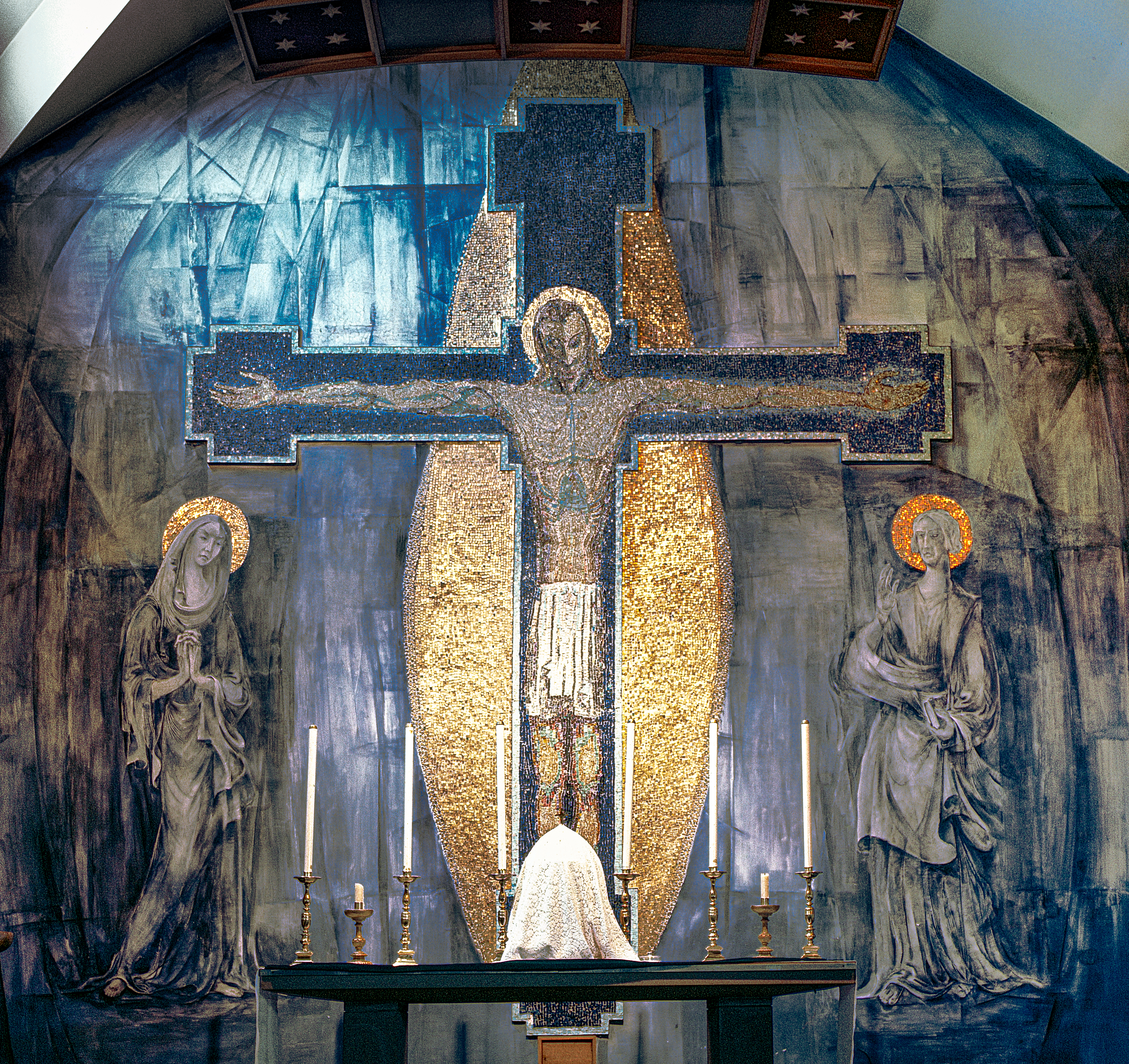Some of Britain’s leading museums have joined the campaign to save a mural of the Crucifixion in an Oldham church closed down by the Diocese of Salford.
Tristram Hunt, director of the Victoria and Albert Museum as well as curators of the Imperial War Museum and the Victoria Gallery, Liverpool, have called for the mural, painted by the Jewish refugee artists George Mayer-Marton for the Holy Rosary Church in Oldham, to be listed. They are supporting the campaign for preservation by Save Britain’s Heritage.
According to Hunt, The Crucifixion is “a remarkable example of Post-war mural art and the revival of the mosaic in Britain” and is a modernist work “of dazzling beauty”.
The church is one of 22 closed in the last four years as part of Bishop John Arnold’s plans for the restructuring of the Salford diocese. The original 1950s work consisted of a crucifixion in mosaic with the figure of Christ depicted in golds and tans against a dark blue cross. Originally there were frescoes of St John and the Virgin Mary on either side but they were covered over with white emulsion in 1980. Now art experts fear the mural is at risk of deteriorating and of vandalism following the church’s closure.
The Catholic Church across England and Wales commissioned several refugee artists who fled to Britain during the Second World War to escape the Nazis. Mayer-Marton arrived in Britain from Vienna after the Anschluss of 1938 and was commissioned as part of the drive to build and decorate new Catholic churches in the 1950s as Catholic populations grew.
In a statement to Save, Hunt praised the bishops of the time, saying that the mural “is also testament to the enlightened post-war ecclesiastical commissions of the Catholic Church awarded to emigre artists from Central Europe”.
Other refugees including Hans Feibusch, Adam Kossowski, Ernst Blensdorf, Henryk Gotlib and Ervin Bossanyi were also commissioned by the Catholic Church and the Church of England to produce stained glass and murals in postwar Britain.
Clare Brenard, a curator at the Imperial War Museum, said that the Holy Rosary’s mural is important as an example of the contribution of artists who escaped Nazi persecution by coming to the UK. She said: “The mural encompasses the pain that is never far away in Mayer-Marton’s work, but also complexity, the joyous and the divine. I speak on behalf of my colleagues at the museum in calling for the further tragedy – of losing one of the artist’s most important, and public, works – to be avoided. We wish for the mural to be fully conserved and a more permanent home to be found for it.”.
Nick Braithwaite, the great-nephew of Mayer-Marton has been campaigning for the last four years to have the mural saved. He wants it to stay in situ at the Holy Rosary but the diocese has said it is committed to finding a new home for it.



 Loading ...
Loading ...